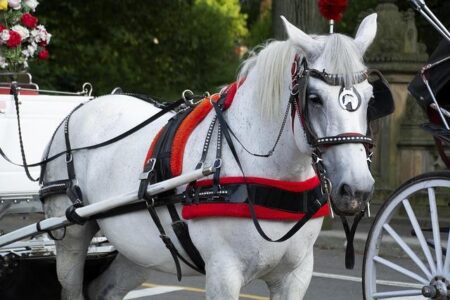Baseball in Canada is experiencing a notable surge in popularity and participation across various levels, signaling a promising future for the sport nationwide. However, despite this upward momentum, the game struggles to gain significant traction within Canadian universities and college campuses. While grassroots leagues and professional organizations report increased engagement, campus baseball programs remain limited and underfunded, highlighting a disconnect that raises questions about the sport’s growth in academic settings. This article explores the contrasting landscape of baseball’s success off-campus versus its challenges within Canada’s higher education institutions.
Baseball’s Growing Popularity Across Canadian Communities
Across Canada, baseball is experiencing a remarkable surge, bridging urban and rural divides and appealing to a diverse range of communities. From small town leagues in Alberta to vibrant multicultural enclaves in Toronto, the sport is fostering local pride and providing youth with accessible opportunities to develop their skills. Key to this growth is the increased investment in community ballparks, the rise of inclusive programs targeting new Canadians, and grassroots initiatives that emphasize family involvement and volunteerism. These efforts have not only rejuvenated existing teams but also sparked the creation of new clubs, making baseball one of the fastest-growing sports outside traditional school environments.
Driving Factors Behind the Popularity:
- Enhanced Municipal Funding for Recreational Facilities
- Cultural Integration through Baseball Outreach Programs
- Partnerships with Local Businesses Sponsoring Teams
- Increased Media Coverage Highlighting Community Success Stories
| Community | New Teams Formed (2023) | Youth Participation Growth |
|---|---|---|
| Calgary | 7 | 22% |
| Vancouver | 5 | 18% |
| Halifax | 3 | 15% |
| Winnipeg | 4 | 20% |
Challenges Facing University Baseball Programs in Canada
Despite baseball’s notable growth across Canada, university programs grapple with several obstacles that hinder their development. A primary challenge lies in limited funding and resource allocation, which often forces teams to compete with more prominent collegiate sports like hockey and basketball. The lack of substantial financial backing affects everything from recruiting top talent to maintaining quality facilities. Moreover, many institutions struggle to secure regular ice time for indoor practice during the harsh Canadian winters, making year-round training difficult.
Another significant issue is the fragmented organizational structure governing university baseball. Unlike other sports that benefit from well-established national leagues or governing bodies, baseball programs are often left to operate independently, leading to inconsistent competition levels and scheduling conflicts. This disjointed system results in fewer opportunities for players to showcase their skills on a national stage, limiting exposure for potential professional or international careers. Key challenges include:
- Inadequate sponsorship and media coverage, reducing visibility and financial support.
- Competition with more entrenched sports for fan interest and university support.
- Limited recruitment pipeline due to fewer scouting resources focused on Canadian university baseball.
- Geographic and climatic barriers that complicate scheduling and travel logistics.
| Challenge | Impact |
|---|---|
| Funding Deficits | Reduced facility upgrades and scholarships |
| Lack of Organized League | Irregular competition and fewer exposure opportunities |
| Winter Climate | Shortened practice seasons, reliance on costly indoor venues |
| Media Neglect | Less audience growth and sponsor interest |
Strategies to Revitalize Collegiate Baseball and Engage Young Athletes
Reigniting interest in collegiate baseball demands a multi-faceted approach centered on accessibility and community involvement. Schools can start by investing in modern facilities and equipment, ensuring players have the resources needed to hone their skills. Introducing flexible scheduling that accommodates athletes’ academic commitments will also encourage participation. Moreover, creating mentorship programs that connect current players with local high school talents can build a stronger pipeline and foster a sense of continuity within the sport. These initiatives not only revive the sport on campus but also cultivate lifelong connections among young athletes.
Engagement can be significantly boosted through creative outreach and inclusive programming. Incorporating summer camps, intramural leagues, and clinics tailored for different skill levels invites a broader demographic, including beginners and casual players. Leveraging digital platforms to broadcast games and share player stories enhances visibility and interest among students who may not traditionally follow baseball. The table below outlines potential engagement activities and their targeted outcomes:
| Activity | Target Group | Expected Outcome |
|---|---|---|
| Weekend Skills Clinics | Beginners & Youth | Boost basic skills and confidence |
| Peer Mentorship Program | High School & College Players | Strengthen talent pipeline |
| Live Game Streams | Student Body | Increase visibility and fan base |
| Intramural Baseball Leagues | Casual & Recreational Players | Foster inclusivity and participation |
Concluding Remarks
As baseball continues to flourish across Canada, its presence remains noticeably limited within the country’s university sports landscape. Despite growing grassroots participation and professional successes, the challenge lies in bridging the gap between community enthusiasm and campus-level engagement. Addressing this disconnect will be crucial for the sustained growth of baseball in Canada, ensuring that the sport not only thrives nationally but also becomes a prominent fixture in collegiate athletics.



